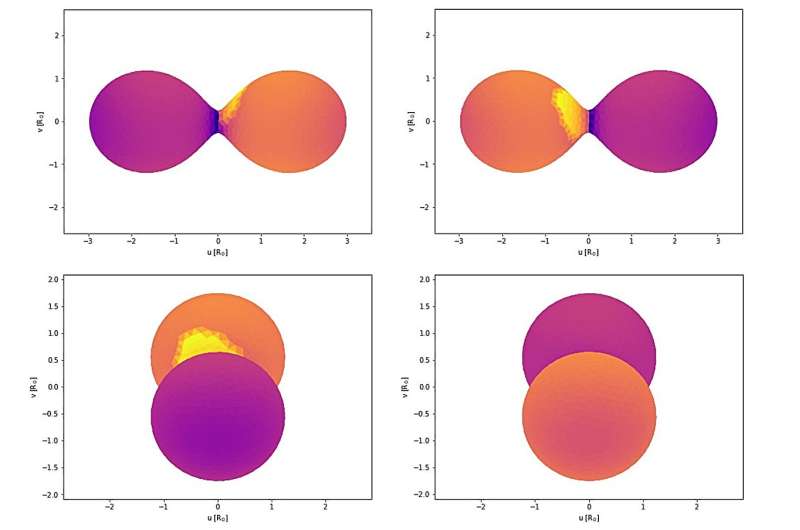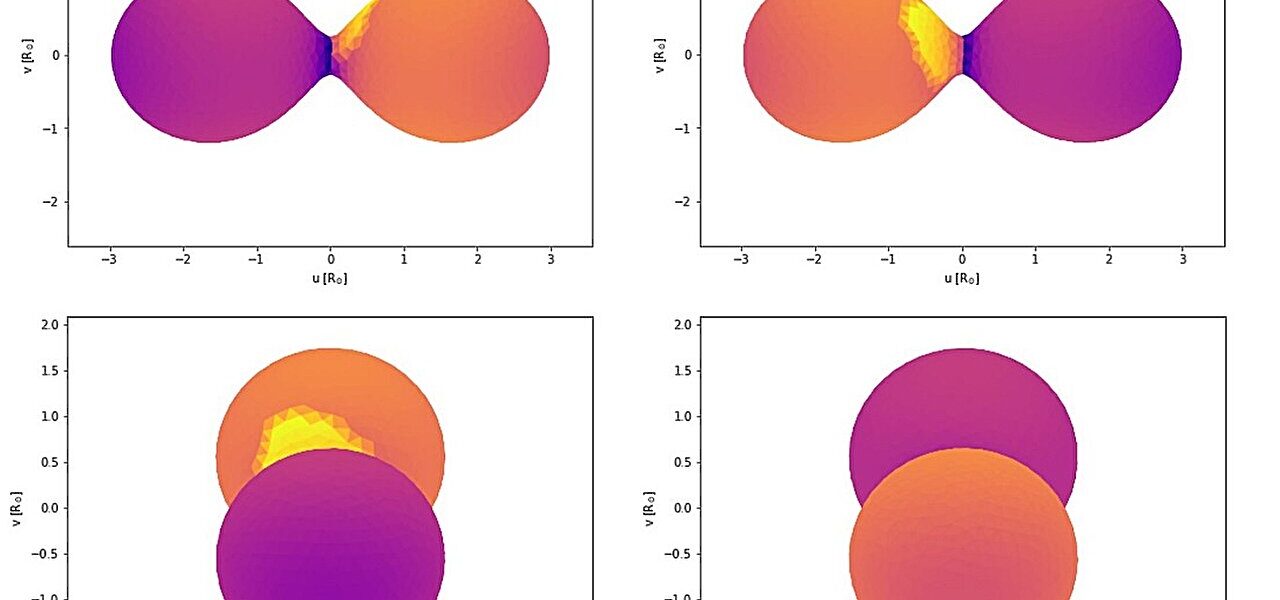
Astronomers from the Binary Systems of South and North (BSN) project have conducted photometric observations of a distant binary star known as V0610 Virgo. Results of the observation campaign, published Sept. 23 in a research paper on the pre-print server arXiv, indicate that V0610 Virgo is a low-mass contact binary system.
W Ursae Majoris-type, or W UMa-type binaries (EWs) are eclipsing binaries with a short orbital period (below one day) and continuous light variation during a cycle. They are also known as “contact binaries,” given that these systems are composed of two dwarf stars with similar temperature and luminosity, sharing a common envelope of material and are thus in contact with one another. In general, studies of contact binaries have the potential to reveal many details about the evolution of stars.
Located some 1,560 light years away from the Earth, V0610 Virgo is an EW with an apparent magnitude of 13.3 mag. Although not much is known about this system, previous observations have found that it has an orbital period of approximately eight hours.
A team of astronomers led by BSN’s Ailar Alizadehsabegh decided to perform photometric observations of V0610 Virgo using a Schmidt-Newton 254mm/1,016mm telescope with the G2-8300 CCD camera at a private observatory in the Czech Republic. The acquired data allowed them to get more insights into the properties of this binary.
“Photometric data were used to perform the first light curve analysis of the V0610 Virgo binary system. We extracted the minima from our observations and compiled the literature, which was few in number,” the researchers wrote in the paper.
The observations found that V0610 Virgo consists of two stars similar in size and mass, with effective temperatures of 5,811 and 5,440 K, separated by 1.9 solar radii from each other. The hotter star (of spectral type G3) has a radius of about 0.735 solar radii and its mass is 0.4 solar masses. The cooler star (of spectral type G8) has a radius of approximately 0.741 solar radii, while its mass was estimated to be 0.399 solar masses.
Hence, based on the results, the astronomers classified V0610 Virgo as a low-mass contact binary (LMCB) system, with a mass ratio of 0.998. The system has a fillout factor of 0.085 and an inclination of 70.65 degrees. The luminosities of the hotter and cooler star were found to be 0.55 and 0.43 solar luminosities, respectively.
The study also found that the orbital period variation trend in V0610 Virgo is on a decrease, what is typical for LMCB systems. They noted that such binaries usually form a disk having the potential to be a place for planet formation with an age considerably shorter than the age of host stars. Therefore, the authors of the paper propose further observations of V0610 Virgo in order to determine whether or not this system could be a potential birthplace for extrasolar planets.
More information:
Ailar Alizadehsabegh et al, First Light Curve Study of the Low Mass Contact Binary V0610 Vir, arXiv (2023). DOI: 10.48550/arxiv.2309.14369
Journal information:
arXiv
© 2023 Science X Network
Citation:
V0610 Virgo is a low-mass contact binary, observations find (2023, October 4)
retrieved 4 October 2023
from https://phys.org/news/2023-10-v0610-virgo-low-mass-contact-binary.html
This document is subject to copyright. Apart from any fair dealing for the purpose of private study or research, no
part may be reproduced without the written permission. The content is provided for information purposes only.




